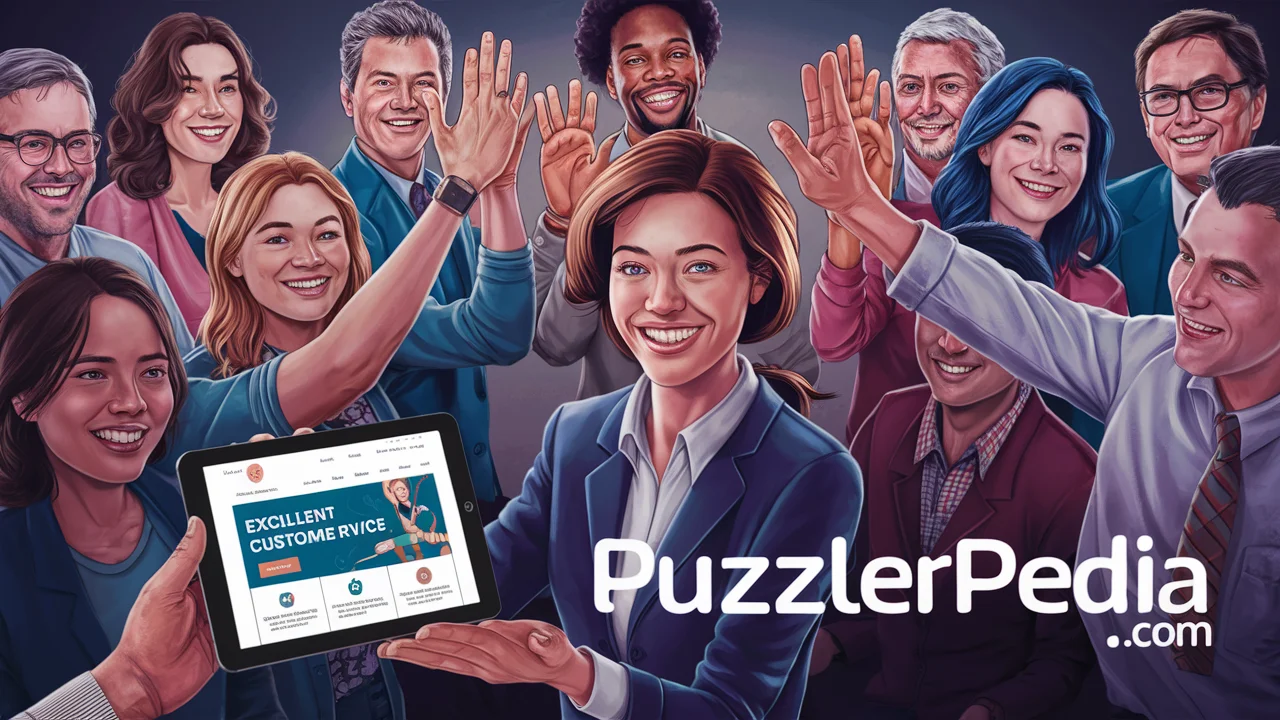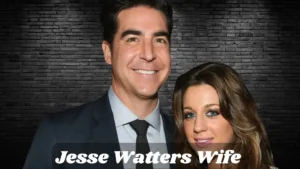Last updated on October 21st, 2024 at 03:07 pm
Customer service is often a challenging field, requiring quick thinking and problem-solving skills. To lighten the mood and make the workday a bit more enjoyable, here are 301 customer service-themed riddles.
These riddles are designed to test your wit and add a bit of fun to your customer service experience. From tricky questions to humorous situations, this collection will keep you entertained and engaged. Let’s dive into these riddles and see if you can figure them all out!
Riddles About Handling Difficult Customers
- Why did the customer cross the road?
🦠 To complain about the chicken!
Answer: Because they weren’t satisfied with their meal. - What did the customer say when they received bad service?
😡 “I think you’re missing the point!”
Answer: They were unhappy with the service. - Why did the customer bring a ladder to the store?
🪜 To reach new heights of frustration!
Answer: Because they were not getting the help they needed. - How did the customer feel after the long wait?
⏳ “Like a frozen dinner!”
Answer: They felt like their time was wasted. - What’s a customer’s favorite thing to hear?
👂 “Let me check that for you!”
Answer: A sign that their issue is being addressed. - Why did the customer bring a map to the store?
🗺️ To find their way to better service!
Answer: Because they were lost in the process. - What did the customer ask the representative during a long call?
📞 “Is this customer service or a waiting game?”
Answer: They were frustrated with the wait time. - Why did the customer complain about the soup?
🍲 Because it was a “stew-pid” decision!
Answer: The customer was unhappy with their order. - What did the customer think of the service when it was late?
⏰ “Time is not on your side!”
Answer: They were displeased with the delay. - Why did the customer call back a second time?
📞 “Because the first call was just a warm-up!”
Answer: They were still not satisfied. - What’s a customer’s biggest nightmare in service?
🌌 “Being left in the dark!”
Answer: Lack of information. - What did the unhappy customer leave behind?
🚪 “A door open for improvement!”
Answer: They were giving feedback. - Why did the customer avoid the store on weekends?
🛍️ “Because the service was always ‘week-end’!”
Answer: The customer found service poor during busy times. - What’s the best way to describe a missed call from a customer?
📞 “A sign of trouble brewing!”
Answer: A potential problem that needs attention. - Why did the customer start a conversation with the manager?
🧑💼 “Because the service wasn’t ‘managing’ their expectations!”
Answer: They were dissatisfied with the service. - What do you call a customer who always complains?
🤔 “A professional critic!”
Answer: Someone who frequently provides negative feedback. - How did the customer react to the broken item?
🛠️ “They were in ‘pieces’!”
Answer: They were very upset. - What did the customer do after receiving poor service?
😡 “They ‘escalated’ the issue!”
Answer: They took their complaint to a higher level. - Why did the customer leave a negative review?
✍️ “Because their experience was a ‘write-off’!”
Answer: They were very disappointed. - What’s a customer’s favorite type of response?
💬 “A timely one!”
Answer: Quick and effective communication. - How does a customer feel about delays?
⏳ “Like time has stopped!”
Answer: They are frustrated with waiting. - What’s a customer’s least favorite phrase?
“I’ll have to get back to you.”
🤔 Answer: It often implies further delay. - Why did the customer visit the store again?
🔄 “To give the service a ‘second chance’!”
Answer: They were willing to try again. - What did the customer feel when they received no help?
😕 “Like they were ‘invisible’!”
Answer: They felt neglected. - Why did the customer leave a tip for bad service?
💵 “Because they hoped it would ‘pay off’ next time!”
Answer: They were hopeful for improvement. - What’s a customer’s favorite kind of service?
🌟 “Exceptional, of course!”
Answer: They prefer outstanding service. - How did the customer describe the slow service?
🐢 “Like watching paint dry!”
Answer: It was very slow. - What did the customer do when the product didn’t work?
🔧 “They tried to ‘fix’ the situation!”
Answer: They sought a solution. - What did the customer expect after a complaint?
📈 “A clear ‘path to resolution’!”
Answer: They wanted their issue addressed. - Why did the customer leave the store unhappy?
😞 “Because the service didn’t ‘measure up’!”
Answer: They were dissatisfied with the experience.
Riddles About Customer Feedback
- What did the customer think of the feedback form?
📋 “It was a ‘formality’!”
Answer: They thought it was just a standard procedure. - Why did the customer fill out a survey?
📝 “To give their ‘two cents’!”
Answer: They wanted to share their opinion. - What’s a customer’s favorite survey question?
🤔 “How satisfied are you?”
Answer: It addresses their level of satisfaction. - How does a customer describe an insightful review?
💡 “As a ‘bright idea’!”
Answer: It’s very helpful and informative. - What did the customer do after a positive review?
🌟 “They felt ‘star-struck’!”
Answer: They were thrilled. - What’s the best way to describe a negative review?
🚫 “A ‘red flag’!”
Answer: It indicates a problem. - Why did the customer rate the service poorly?
🥴 “Because it left them ‘dazed’!”
Answer: They were very disappointed. - What did the customer expect after their feedback?
📬 “A response ‘in the mail’!”
Answer: They wanted to hear back. - Why did the customer leave a suggestion?
💡 “To make things ‘brighter’!”
Answer: They wanted to improve the service. - What’s the customer’s reaction to a generic response?
🙄 “It’s ‘cookie-cutter’!”
Answer: They find it impersonal. - What did the customer say about the follow-up?
🔄 “It was a ‘replay’ of the same old issues!”
Answer: They felt it didn’t address their concerns. - Why did the customer leave a long review?
✍️ “Because they had a lot to ‘unpack’!”
Answer: They had detailed feedback. - What’s a common customer feedback mistake?
📝 “Not being ‘specific’!”
Answer: Generic feedback isn’t very useful. - How did the customer describe a survey with irrelevant questions?
❓ “Like a ‘wild goose chase’!”
Answer: They found it unhelpful. - What’s the customer’s reaction to a lack of feedback follow-up?
😠 “It’s ‘unprofessional’!”
Answer: They feel ignored. - Why did the customer fill out a feedback form anonymously?
🤐 “To avoid ‘personal’ conflicts!”
Answer: They wanted to be candid. - What’s the customer’s favorite type of feedback question?
💬 “One that ‘hits the mark’!”
Answer: A question that addresses their concerns. - How does a customer feel about a feedback form with too many questions?
😩 “Like it’s an ‘interrogation’!”
Answer: They find it overwhelming. - What’s a customer’s least favorite part of feedback surveys?
🕰️ “The ‘waiting’ for results!”
Answer: They dislike delays. - How did the customer feel about an unsolicited survey?
📬 “Like it was ‘spam’!”
Answer: They felt it was unnecessary. - What’s a common customer feedback format?
📋 “The ‘star’ rating system!”
Answer: A popular way to rate experiences. - Why did the customer submit feedback about the feedback system?
💬 “To improve the ‘improvement’ process!”
Answer: They wanted to enhance the feedback system. - What did the customer say about the feedback response they received?
📨 “It was ‘generic’!”
Answer: They felt it lacked personalization. - What’s the best way to use customer feedback?
🛠️ “To ‘fix’ what’s broken!”
Answer: To address issues and improve. - Why did the customer complain about the feedback survey?
❌ “It was ‘inaccessible’!”
Answer: They had trouble using it. - What’s a customer’s reaction to a well-handled complaint?
👍 “They feel ‘validated’!”
Answer: They appreciate the resolution. - Why did the customer provide feedback on a product they didn’t buy?
🛒 “Because they had ‘opinions’ on it!”
Answer: They had thoughts about the product. - How did the customer feel after receiving a prompt reply to their feedback?
😊 “Like they were ‘heard’!”
Answer: They felt their concerns were acknowledged. - What did the customer think of the survey’s outcome?
🎯 “It was ‘right on target’!”
Answer: They felt it was accurate. - What’s a customer’s ideal feedback process?
🔄 “One that’s ‘smooth and efficient’!”
Answer: They prefer a seamless experience.
Riddles About Customer Satisfaction
- What’s the key to customer satisfaction?
🗝️ “A ‘happy’ customer!”
Answer: Ensuring the customer is pleased. - How did the customer feel about the excellent service?
🌟 “Like they were ‘walking on air’!”
Answer: They were thrilled. - What did the customer say about the fast service?
🚀 “It was ‘out of this world’!”
Answer: They were impressed with the speed. - What’s the best way to describe a satisfied customer?
😊 “A ‘happy camper’!”
Answer: They are very pleased. - Why did the customer rave about the service?
🌟 “Because it was ‘above and beyond’!”
Answer: The service exceeded their expectations. - What’s a customer’s reaction to receiving extra help?
🙌 “They feel ‘grateful’!”
Answer: They appreciate the additional assistance. - Why did the customer return to the store?
🔁 “Because their experience was ‘top-notch’!”
Answer: They were very satisfied. - How did the customer describe the pleasant interaction?
🌈 “Like a ‘breath of fresh air’!”
Answer: It was refreshing. - What did the customer think of the quick resolution?
⚡ “It was ‘lightning-fast’!”
Answer: The issue was resolved very quickly. - What’s a customer’s favorite service feature?
✨ “One that’s ‘exceptional’!”
Answer: They love outstanding service. - Why did the customer recommend the service to others?
🗣️ “Because they were ‘thrilled’ with it!”
Answer: They had a great experience. - What’s the customer’s reaction to a surprise discount?
🎁 “They’re ‘overjoyed’!”
Answer: They are very pleased. - How does a customer feel about personalized service?
🛍️ “Like they’re ‘special’!”
Answer: They feel valued. - What’s the customer’s reaction to a follow-up call?
📞 “They feel ‘cared for’!”
Answer: They appreciate the attention. - How did the customer react to being thanked?
🙏 “They felt ‘appreciated’!”
Answer: They felt valued. - Why did the customer praise the staff?
👏 “Because they were ‘on point’!”
Answer: The staff did an excellent job. - What’s a sign of a satisfied customer?
😊 “A smile!”
Answer: They show their satisfaction through their demeanor. - Why did the customer give a glowing review?
🌟 “Because their expectations were ‘surpassed’!”
Answer: The service went beyond their expectations. - How does a customer feel about a service guarantee?
✅ “Like their worries are ‘put to rest’!”
Answer: They feel secure. - What did the customer think of the helpful advice?
💡 “It was ‘spot on’!”
Answer: The advice was very useful. - Why did the customer become a loyal patron?
🔄 “Because they were ‘consistently pleased’!”
Answer: They were repeatedly satisfied. - What’s the customer’s reaction to a smooth process?
⚡ “It was ‘seamless’!”
Answer: The process was easy and efficient. - How did the customer feel about the attentive service?
👂 “They felt ‘well taken care of’!”
Answer: They were very pleased. - What’s a common sign of a satisfied customer?
🛍️ “Repeat business!”
Answer: They return because they’re happy. - Why did the customer give a high rating?
⭐ “Because the service was ‘stellar’!”
Answer: They were extremely pleased. - How does a customer react to excellent customer service?
😃 “They’re ‘over the moon’!”
Answer: They are very happy. - What did the customer say about the friendly staff?
👋 “They were ‘a joy’ to work with!”
Answer: They enjoyed interacting with the staff. - What’s a customer’s ideal service experience?
🌟 “One that’s ‘flawless’!”
Answer: They prefer perfect service. - How did the customer feel about the problem-solving skills?
🧠 “Impressed and ‘satisfied’!”
Answer: They appreciated the effective solutions. - Why did the customer leave a tip for the service?
💵 “Because they were ‘pleased’!”
Answer: They wanted to show their appreciation.
Riddles About Product Returns
- Why did the customer return the jacket?
🧥 “Because it didn’t ‘fit’ the occasion!”
Answer: It wasn’t appropriate or fitting. - What’s the customer’s reaction to a refund?
💵 “It’s ‘money well spent’!”
Answer: They feel satisfied with the return process. - Why did the customer return the gadget?
📱 “Because it was a ‘dud’!”
Answer: The product didn’t work. - What did the customer say about the easy return process?
✅ “It was ‘a breeze’!”
Answer: The process was very smooth. - How does a customer feel about a hassle-free return?
😌 “Relieved and ‘content’!”
Answer: They are happy with the ease of return. - Why did the customer return the shoes?
👟 “Because they were ‘a step too far’!”
Answer: They were uncomfortable or didn’t fit. - What’s the best part of returning a product?
🔄 “Getting a ‘refund’!”
Answer: Receiving money back. - How did the customer feel about the product exchange?
🔄 “It was ‘a fair trade’!”
Answer: They were satisfied with the replacement. - Why did the customer return the blender?
🍹 “Because it was a ‘blend’ of disappointment!”
Answer: The product didn’t meet expectations. - What’s the customer’s reaction to a return policy?
📜 “It’s ‘clear and fair’!”
Answer: They appreciate a straightforward policy. - Why did the customer return the book?
📚 “Because it was ‘a hard read’!”
Answer: They didn’t enjoy it. - What’s the customer’s response to a return receipt?
🧾 “It’s ‘proof of purchase’!”
Answer: It confirms the return. - How did the customer describe the return process?
📦 “It was ‘easy peasy’!”
Answer: It was simple and quick. - Why did the customer return the toy?
🎲 “Because it was ‘not a play’!”
Answer: It didn’t work as expected. - What’s the best way to handle returns?
👍 “With ‘flexibility’!”
Answer: Being accommodating with return policies. - How does a customer feel after a return approval?
😃 “Like they ‘dodged a bullet’!”
Answer: They’re relieved the return was accepted. - Why did the customer exchange the item for another?
🔄 “Because it was ‘not their cup of tea’!”
Answer: The item wasn’t to their taste. - What’s the customer’s opinion on a return window?
⏳ “It’s ‘just in time’!”
Answer: The timeframe for returns is appropriate. - How did the customer feel about the return fee?
💸 “It was ‘a bitter pill’!”
Answer: They didn’t like paying extra. - Why did the customer return the furniture?
🛋️ “Because it was ‘a misfit’!”
Answer: It didn’t suit their space. - What’s a common reason for returning clothes?
👗 “They’re ‘off the rack’!”
Answer: They didn’t fit well. - How does a customer feel about a return shipping label?
🏷️ “It’s ‘a lifesaver’!”
Answer: It makes the return process easier. - Why did the customer return the appliance?
🏠 “Because it was ‘a dud’!”
Answer: It didn’t function properly. - What’s the customer’s reaction to a return policy extension?
📆 “It’s ‘a nice bonus’!”
Answer: They appreciate more time for returns. - How did the customer feel about the refund process?
💵 “It was ‘a welcome relief’!”
Answer: They were happy to get their money back. - Why did the customer return the electronic device?
📺 “Because it was ‘out of order’!”
Answer: It wasn’t working properly. - What’s the customer’s reaction to a quick return?
⏱️ “It’s ‘fast and fabulous’!”
Answer: They are pleased with the speed. - How does a customer describe the return experience?
🔄 “It was ‘hassle-free’!”
Answer: They had a smooth process. - Why did the customer return the tool?
🛠️ “Because it was ‘not up to snuff’!”
Answer: It didn’t meet quality expectations. - What’s the customer’s feeling about a return credit?
💳 “It’s ‘a pleasant surprise’!”
Answer: They’re happy to get store credit.
Riddles About Customer Loyalty
- Why did the customer keep coming back?
🔁 “Because they were ‘loyal’!”
Answer: They valued the service or product. - What’s a sign of customer loyalty?
❤️ “Repeated business!”
Answer: Returning customers show loyalty. - Why did the customer join the loyalty program?
🎁 “For the ‘rewards’!”
Answer: They wanted to earn benefits. - What’s a key factor in building customer loyalty?
🤝 “Excellent ‘service’!”
Answer: Providing great service encourages loyalty. - How did the customer feel about the loyalty points?
🌟 “Like they were ‘earning gold’!”
Answer: They appreciated the rewards. - Why did the customer refer friends?
🗣️ “Because they were ‘satisfied’!”
Answer: They were happy with their experience. - What’s the customer’s reaction to exclusive offers?
🎉 “They feel ‘special’!”
Answer: They appreciate exclusive deals. - Why did the customer stay loyal to the brand?
🏆 “Because of ‘consistent quality’!”
Answer: They valued the reliable quality. - How did the customer respond to personalized service?
🛍️ “They felt ‘valued’!”
Answer: They appreciated the personal touch. - What’s a customer’s favorite loyalty program benefit?
🏅 “Exclusive ‘discounts’!”
Answer: They like getting special discounts. - Why did the customer write a positive review?
✍️ “Because they were ‘impressed’!”
Answer: They were pleased with the service. - How does a customer feel about a thank-you note?
💌 “They feel ‘appreciated’!”
Answer: They value the gesture. - Why did the customer attend the brand’s event?
🎟️ “For the ‘experience’!”
Answer: They wanted to be part of the brand’s activities. - What’s a common reason for customer retention?
📈 “Great ‘customer service’!”
Answer: Outstanding service keeps customers coming back. - How did the customer feel about the loyalty rewards?
🎁 “Like they hit the ‘jackpot’!”
Answer: They were very pleased with the rewards. - Why did the customer upgrade their membership?
⬆️ “For ‘extra perks’!”
Answer: They wanted more benefits. - What’s a benefit of a rewards program?
🎁 “It ‘incentivizes’ repeat purchases!”
Answer: It encourages customers to buy more. - How did the customer react to a special loyalty event?
🎉 “They were ‘excited’!”
Answer: They were enthusiastic about the event. - What’s a sign of a loyal customer?
💳 “Frequent ‘purchases’!”
Answer: Regular buying indicates loyalty. - Why did the customer participate in surveys?
📝 “To earn ‘rewards’!”
Answer: They wanted to get benefits for their feedback. - What’s the customer’s reaction to a loyalty card?
🃏 “It’s ‘a keeper’!”
Answer: They find it valuable. - Why did the customer stay with the service?
💯 “Because it was ‘dependable’!”
Answer: They valued reliability. - How does a customer feel about early access to sales?
⏳ “They’re ‘ahead of the game’!”
Answer: They appreciate being first in line. - What’s a benefit of being a loyalty program member?
🎊 “Exclusive ‘savings’!”
Answer: Members get special discounts. - Why did the customer attend the VIP event?
🎟️ “For ‘exclusive access’!”
Answer: They wanted to experience something special. - How did the customer feel about the brand’s appreciation efforts?
💖 “Valued and ‘important’!”
Answer: They feel recognized. - What’s a customer’s reaction to personalized offers?
📩 “They feel ‘special’!”
Answer: They appreciate offers tailored to them. - Why did the customer refer others to the brand?
🗣️ “Because they were ‘pleased’!”
Answer: They had a great experience. - How did the customer react to a loyalty bonus?
💰 “They felt ‘rewarded’!”
Answer: They were pleased with the extra benefit. - What’s a key element of a successful loyalty program?
🏆 “Valuable ‘rewards’!”
Answer: Rewards that customers find worthwhile.
Riddles About Customer Service Training
- Why do companies invest in customer service training?
📚 “To ‘enhance’ skills!”
Answer: To improve employee abilities. - What’s a key aspect of service training?
🎓 “Learning ‘effective communication’!”
Answer: Teaching employees to communicate well. - How does training improve customer interactions?
🗣️ “By making them ‘more proficient’!”
Answer: It enhances employee skills. - Why is role-playing used in training?
🎭 “To practice ‘real-life’ scenarios!”
Answer: To simulate actual situations. - What’s a benefit of comprehensive training?
👍 “Better ‘customer satisfaction’!”
Answer: Improved service leads to happier customers. - How does training affect employee confidence?
💪 “It ‘boosts’ it!”
Answer: Employees feel more confident. - What’s a common topic in customer service training?
🛠️ “Handling ‘difficult customers’!”
Answer: Teaching strategies for tough interactions. - Why do companies evaluate training programs?
📊 “To ensure ‘effectiveness’!”
Answer: To measure how well training works. - What’s an essential skill taught in customer service training?
🗣️ “Active ‘listening’!”
Answer: Being attentive to customer needs. - How does training help with conflict resolution?
⚖️ “By providing ‘strategies’!”
Answer: It offers techniques to resolve issues. - What’s a goal of customer service training?
🎯 “Improving ‘response time’!”
Answer: To make service quicker. - How does training impact employee performance?
📈 “It ‘enhances’ it!”
Answer: Employees perform better after training. - What’s a common training tool?
💻 “Simulation ‘software’!”
Answer: Used to practice customer interactions. - Why is feedback important in training?
💬 “It ‘guides’ improvement!”
Answer: Helps refine training methods. - What’s a benefit of ongoing training?
🔄 “Continuous ‘skill development’!”
Answer: Skills are constantly updated. - How does training affect customer service quality?
🌟 “It ‘elevates’ it!”
Answer: Service quality improves. - What’s a sign of effective training?
✅ “High ‘customer satisfaction’ scores!”
Answer: Satisfied customers indicate success. - Why is customer feedback used in training?
📝 “To identify ‘areas for improvement’!”
Answer: It highlights where training can improve. - What’s an outcome of successful service training?
🌟 “Enhanced ‘customer experiences’!”
Answer: Customers have better interactions. - How does training help with handling complaints?
🎓 “By providing ‘effective techniques’!”
Answer: Teaches how to manage complaints well. - What’s a key element of training programs?
🎯 “Clear ‘objectives’!”
Answer: Specific goals to achieve. - How does training help with product knowledge?
📚 “By offering ‘in-depth’ information!”
Answer: Ensures employees know their products well. - Why is customer service training important for new hires?
🆕 “To provide ‘essential skills’!”
Answer: Equips them with necessary abilities. - What’s a common training method for improving empathy?
💬 “Empathy ‘exercises’!”
Answer: Activities that build understanding. - How does customer service training affect teamwork?
🤝 “It ‘fosters’ collaboration!”
Answer: Encourages working well together. - What’s a common outcome of effective service training?
💡 “Increased ‘employee engagement’!”
Answer: Employees are more involved and motivated. - How does training help with managing stress?
🌈 “By teaching ‘coping strategies’!”
Answer: Provides ways to handle stress. - Why do companies use mystery shoppers in training?
👤 “To assess ‘service quality’!”
Answer: To evaluate how well service is delivered. - What’s a benefit of personalized training?
🧑🏫 “Tailored ‘learning’ experiences!”
Answer: Training is adapted to individual needs. - How does training impact employee retention?
🌟 “It ‘improves’ it!”
Answer: Better training can lead to longer employee tenure.
Riddles About Handling Difficult Customers
- What’s the first step to handling a difficult customer?
🤔 “Listening ‘carefully’!”
Answer: Understanding their concerns. - How do you stay calm when faced with a difficult customer?
🌬️ “By keeping your ‘cool’!”
Answer: Maintaining composure under pressure. - What’s a key approach to resolving conflicts?
🕊️ “Finding ‘common ground’!”
Answer: Identifying mutual understanding. - What’s a good strategy for de-escalating a heated conversation?
🔥 “Using a ‘calm tone’!”
Answer: Speaking calmly to soothe the situation. - How can you show empathy to a frustrated customer?
💖 “By acknowledging their ‘feelings’!”
Answer: Validating their emotions. - What’s an effective way to apologize to an upset customer?
🙏 “Offering a ‘sincere apology’!”
Answer: Apologizing genuinely for the inconvenience. - How do you handle unreasonable demands?
🚫 “By setting ‘clear boundaries’!”
Answer: Defining what’s feasible. - What’s a good practice for managing a difficult customer interaction?
📋 “Documenting the ‘conversation’!”
Answer: Keeping records of the discussion. - What’s a helpful technique for defusing tension?
😌 “Using ‘positive language’!”
Answer: Choosing words that soothe the situation. - How do you ensure you address all customer concerns?
✔️ “By ‘confirming understanding’!”
Answer: Reiterating their issues to ensure all are addressed. - What’s a good way to offer solutions to a dissatisfied customer?
🔧 “Providing ‘viable options’!”
Answer: Presenting feasible solutions. - How can you demonstrate patience with a difficult customer?
⏳ “By giving them ‘time to express’ themselves!”
Answer: Allowing them to voice their concerns fully. - What’s an effective way to manage a customer’s anger?
🔥 “By staying ‘professional’!”
Answer: Maintaining a professional demeanor. - How can you prevent a situation from escalating?
🛑 “By addressing issues ‘early’!”
Answer: Handling problems before they grow larger. - What’s a key skill for handling a difficult customer?
🧠 “Critical ‘thinking’!”
Answer: Analyzing the situation and responding appropriately. - How do you handle a customer who keeps repeating their complaint?
🔄 “By showing ‘active listening’!”
Answer: Demonstrating that you are listening and understanding. - What’s a good way to reassure a concerned customer?
🤗 “By providing ‘reassurance’!”
Answer: Offering comfort and assurance. - How do you keep a difficult conversation constructive?
🏗️ “By focusing on ‘solutions’!”
Answer: Directing the conversation towards resolving the issue. - What’s an important aspect of handling a complaint effectively?
📝 “Documenting ‘details’!”
Answer: Keeping a record of the complaint specifics. - How do you handle a customer who is demanding and aggressive?
⚔️ “By staying ‘assertive’ but ‘respectful’!”
Answer: Firmly managing the situation while remaining courteous. - What’s a useful technique for calming a frustrated customer?
🧘♂️ “Offering ‘compensation’ or ‘benefits’!”
Answer: Providing something of value to soothe the frustration. - How can you handle a customer who refuses to accept your solution?
🚧 “By exploring ‘alternative solutions’!”
Answer: Offering different options to address their issue. - What’s a good way to ensure you don’t take a difficult interaction personally?
🧘♀️ “By maintaining ‘emotional distance’!”
Answer: Keeping a professional boundary. - How do you manage a customer who is not cooperating?
🤝 “By remaining ‘patient and persistent’!”
Answer: Persistently working to find a solution while being patient. - What’s a helpful practice for keeping difficult interactions on track?
🛤️ “Sticking to the ‘facts’!”
Answer: Focusing on factual information rather than emotions. - How do you deal with a customer who is demanding immediate resolution?
⏱️ “By setting ‘realistic expectations’!”
Answer: Managing their expectations for resolution time. - What’s a good approach to take when a customer is rude?
🚫 “By staying ‘polite’ and ‘professional’!”
Answer: Maintaining politeness despite their behavior. - How can you handle a customer who is constantly interrupting?
⛔ “By politely ‘redirecting’ them!”
Answer: Guiding the conversation back on track. - What’s an effective way to close a difficult customer interaction?
🔚 “By summarizing ‘resolved issues’ and ‘next steps’!”
Answer: Recapping what has been handled and what will happen next. - How can you make sure a customer feels heard during a challenging conversation?
👂 “By using ‘reflective listening’ techniques!”
Answer: Reflecting their concerns back to them to show understanding.

Dariel Campbell is the creative mind behind Puzzlerpedia, combining a love for puzzles with a talent for engaging writing. His innovative approach to puzzle creation and analysis has earned him a dedicated following. Dariel’s articles are not only informative but also inspire readers to see puzzles in a new and exciting light.










